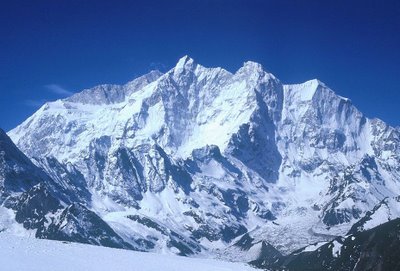
North of the Himalayas, in western China, lies the
self-governing land of Tibet. The Tibetan Plateau is the
highest populated region on the planet and stands at an average
elevation of 16,000 feet. To the north lie the imposing Kunlun
Shan mountains, providing a natural border.
At one of the last great outposts is the isolated Argin Shan
Reserve, the largest nature reserve in China. The large herds
of hooved animals present in this wilderness have led to its
nickname ‘Serengeti of Asia’. The snow leopard is a frequent
visitor to the reserve but unfortunately excessive hunting
means it is now an endangered species.
Such imposing platformed territory offers source to some of the
most powerful rivers in Asia including the Indus, Brahmaputra,
Ganges, Salween and Mekong. The Yangtze twists and turns
through the broad green valleys flowing eastwards across China
and ultimately the East China Sea.
Many folk of Tibet are nomads and move their entire families
around the country. Skin tents are popular living domains
allowing easy departure should circumstances dictate. Rural
life reigns in Tibet and starkly contradicts many westerners
lifestyles. Religion is practiced passionately with many a
young boy aspiring to become a Buddhist monk.
Eager to preserve their nomadic way of life, summer chores must
be completed by fall before the severe winter weather prevents
passage through the mountains. The mountain trails are
fundamental to trading and pattern a working myriad of paths
during the more clement months of the year.
Much of Tibet is barren land scattered with modest
neighborhoods laboring arduously to earn a livelihood from
the land. This is compensated some part however by the
beautiful scenery in which these nomadic folk live. Soaring
peaks bathe in cloud as colossal mountains command the horizon
throughout this noble ground. In this pollution-free atmosphere
the pure, brisk air permits unhindered panorama for miles on
every side.
The brief spring and summer months bring an explosion of
color. Greenery is rife as efflorescence emerge almost
overnight to complement the vivid territory. The outbreak of
bloom however is short lived. The onset of winter blankets all
in a sheet of white, as snow and ice mask the landscape.
Uncompromising winter months bring much Tibetan activity to a
pause, as the elements seize a grip of the environment. The
brief term of mild weather is crucial to the livelihood of the
farmers. Livestock must be put to pasture and fattened up in
time for winter.
About The Author:
Steven Cronin writes articles, poetry and short stories predominantly concerning travel as well as issues that influence the world in which we live. For further
literature visit http://www.sargas.co.uk
Source : World Travel
No comments:
Post a Comment